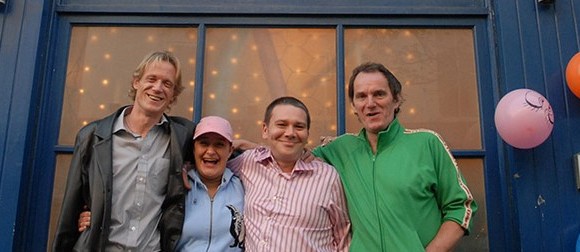Build On Belief
Danielle Aumord visits Build On Belief to find staff and clients helping each other to move away from addiction.
“I tried a few detoxes and they didn’t work so I ended up going to rehab because I thought I was going to die. Also I wanted to see if I liked being drug free,” explains Tim Sampey, the 52-year-old founder of drug and alcohol rehabilitation service Build On Belief (BoB). “I spent 27 years on heroin. I couldn’t remember what it was like being drug free.”
Sampey started the service, which is service user-led and based in North Kensington, London, in 2005, a few months after being discharged from rehab. Past and present service users make key decisions about how the services of BoB are delivered with the staff team also consisting of ex-addicts.
Even those whose recovery is still in progress are offered a chance to volunteer here. Simply put, it’s a socially interactive peer-run service and the weekend social club is one standout reason for its popularity.
The social club functions as a drop in, and members can partake in art- or music-based workshops, yoga classes or receive any one of several complimentary therapy treatments, for example shiatsu or acupuncture. They can also find a friendly ear, a cup of tea, some sandwiches and snacks, plus a referral to more structured services, if needs be.
Sampey says originally he started the social club because he was bored: “At the time I came back from rehab there were no weekend or evening services available. Isolation leads to relapse, my own included, which is why I started this up.”
The team also run a sports club for clients, which is part-managed by volunteer Kevin Ramsay*: “Exercise is essential as it releases serotonin into your brain, which is what many addicts have been chasing for years through drug abuse. This way, they can get a natural high to fill the void of a chemical, and essentially illegitimate, high,” explains Ramsay.
Ramsay himself was addicted to both heroin and alcohol. He says that the services provided are essential for persons in recovery from addiction especially after exiting a structured rehab or prison-based programme. “I have been through the system so I know what works. If you’re lucky enough to get into a detox and rehab unit, it often leads you into a vacuum because all your social structure is gone upon exit and needs to replaced.”
A key contributor to its success is that both the facilitators and the clients provide mutual support and encouragement to one another. Ramsay suggests that this contributes to reducing the risk of relapse for service users: “If you’re lucky to have a room over your head (once you exit rehab), you might be prone to isolation and depression. The chips are stacked against you in the battle to stay clean. When members attend these activities, it means that they get the chance to see someone for some informal counselling and encouragement.”
And it is in this way that BoB bridges the gap between residential treatment and readjustment back into the ‘real’ world for their clients. It can be the difference between a recovering addict picking up a needle or not.
* Name has been changed















Write Your Comment